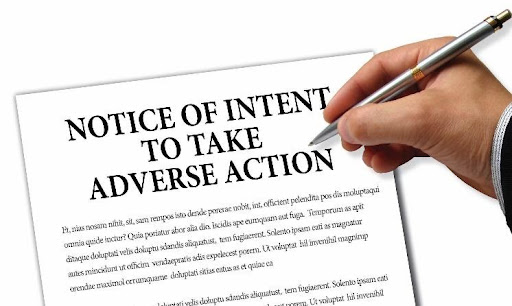Avoiding Hidden Hiring Landmines: 4-Step FCRA Compliance Plan for Handling Pre-Adverse Action Notices |
back to blog

By Richard A. Millisor, Partner and Joseph Nelson, Associate, Fisher & Phillips LLP
Background check reports are an important – and in many cases essential – tool in making informed and responsible employment decisions. Gathering and using this information, however, carries legal obligations and corresponding risks, some of which may not be immediately apparent to employers. One of the most common mistakes occurs when an employer ignores or incorrectly follows the pre-adverse action requirement created by the Fair Credit Reporting Act, a federal statute that many do not realize governs some hiring actions. What do employers need to know about this obligation? This Insight provides an overview and offers a four-step plan to ensure compliance.
The Background of Background Screenings
A background screening report may reveal that an applicant is unqualified for the position due to a criminal record that is incompatible with the prospective job. When this occurs, some hiring managers may assume they can automatically disqualify the applicant and move on to the next candidate. This assumption is incorrect – and could be costly.
In addition to EEOC guidance requiring a consideration of individualized circumstances relating to criminal convictions and a growing number of local “fair chance” laws that may be implicated, the federal Fair Credit Reporting Act (FCRA) requires a meaningful “pre-adverse action” notice to an applicant or employee before making a final decision based, “in whole or in part,” on a background check obtained from a consumer reporting agency. The FCRA’s broad definition of consumer reporting agencies encompasses virtually all third-party background screening companies.
A Primer on Pre-Adverse Notices
Among other legal obligations imposed on employers that utilize the services of a third-party background check company, an employer who “intends” to not to hire an applicant or take any “adverse” action against an employee because of information revealed in a background screening report must send a pre-adverse action notice to the applicant or employee before making the employment decision. The “pre-adverse action” notice – generally in a prepared letter form – should advise the applicant of the “intent” to take such action. The notice also must include a copy of the applicant’s consumer report and a written summary of the applicant’s rights under the FCRA.
This requirement does not prohibit an employer from ultimately making a final decision based on the results of a background screen. Instead, the pre-adverse notice requirement is intended to provide the applicant important information at a time and in a form that allows them a reasonable opportunity to dispute errors in the report.
4-Step Plan to Meet the FCRA’s Pre-Adverse Action Notice Requirement
Although seemingly simple, navigating the FCRA’s pre-adverse action notice requirement requires intentionality, particularly for employers who have attempted to simplify and standardize their consideration of “criminal offenses.” In order to limit legal risk when relying on potentially “disqualifying” criminal offenses, you should (at the very least) follow these four steps.
- Provide the Pre-Adverse Action Notice: Before making an employment decision based, even partially, on a background screening report, you must provide a pre-adverse action notice, a copy of the background screening report, and a written copy of the Summary of Your Rights Under the Fair Credit Reporting Act. Note that certain states and localities require additional content in the pre-adverse notice. As part of the pre-adverse action process, you must give the applicant a reasonable period of time to review the report, allowing them to address any information they consider inaccurate, before taking adverse action. A “reasonable period of time” depends on the circumstances of each individual situation, including factors such as your industry, business needs, past practice, and information in the report. At a minimum, however, you should provide at least five business days. During this period, you should provide the candidate a chance to offer clarifying information to correct the record or otherwise explain the report’s findings.
- Use a Criminal Offense Decision “Matrix” Only as a Guide, and Not the Basis for Automatic Employment Decision: Many employers have developed a criminal offense matrix to assist in employment decision making. Such matrices, however, should only be used as a policy guide and not as an automatic employment disqualifier. Some courts have found that using a decision matrix as a “final adjudication” is an affront to the “pre-adverse” notice requirements of the FCRA. Over-reliance on this policy guide may also create risks under the EEOC’s guidance. The EEOC recognizes that, absent specific job-related factors and an individualized assessment, reliance on an applicant’s criminal record history may result in a disparate impact on the basis of race. Additionally, care should be taken to comply with any requirements imposed by local “Fair Chance” laws before taking action based on an applicant’s criminal record history.
- Consider Any Ensuing Explanation or Dispute by the Applicant: If the applicant comes forward to dispute or explain the background screening report after receiving the pre-adverse notice, document your consideration of this explanation in making the final adverse employment decision. If the consumer reporting agency or background screening company has corrected the background report based on a dispute by the applicant, only use the corrected or amended report in making employment decisions.
- Provide a Final, or Adverse Action, Notice: If, following the above steps, you make a final decision that adverse action is warranted, you must provide the applicant with a second notice, or adverse action notice. This notice, again generally in letter form, must:
- advise the applicant that employment has been denied (or whatever other adverse action is being taken) based in whole or in part on the information contained in the background screening report;
- contain the name, address and phone number of the consumer reporting agency (or third-party background screening company) that provided the report;
- include a statement that the consumer reporting agency did not make the decision and is unable to provide the applicant the specific reasons why the action was taken;
- inform the applicant of the right to obtain another free copy of their background screening report any time within 60 days of receiving the notice; and
- inform the applicant of the right to dispute the accuracy or completeness of the information contained in the background screening report with the identified consumer reporting agency.
Conclusion
The FCRA carries a private right of action that allows applicants the right to recover compensatory, statutory, and punitive damages, as well as attorneys’ fees. This has resulted in a growing cottage industry of attorneys and law firms dedicated to bringing single-plaintiff and class action claims against employers. Because the landscape in this area is increasingly dangerous, it would be to your benefit to review this four-step plan and incorporate it into your hiring practices.
If you have any questions about complying with the FCRA or an emerging array of state and local laws addressing the use of background screening reports from consumer reporting agencies, please contact the authors of this Insight, your Fisher Phillips attorney, or any attorney in our FCRA & Background Screening Practice Group.
By Richard A. Millisor, Partner and Joseph Nelson, Associate, Fisher & Phillips LLP
https://www.fisherphillips.com/news-insights/4-step-fcra-compliance-plan.html


